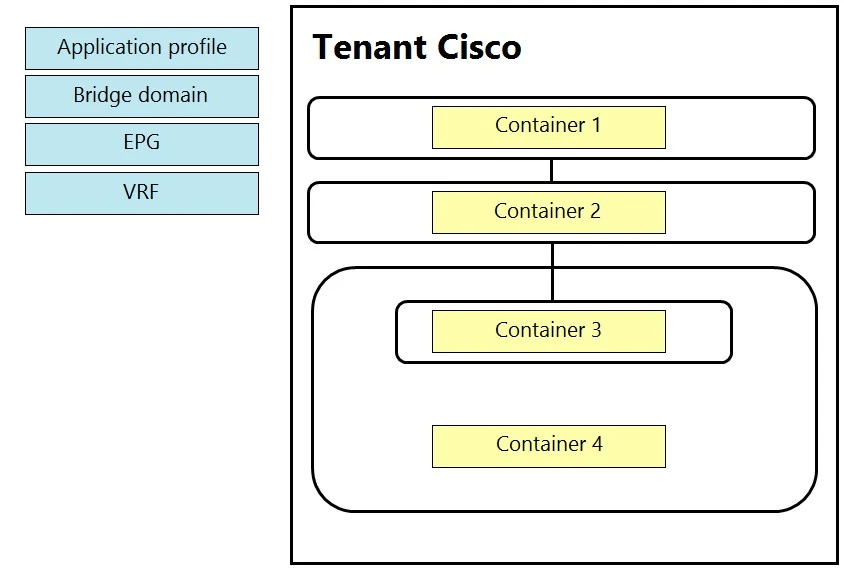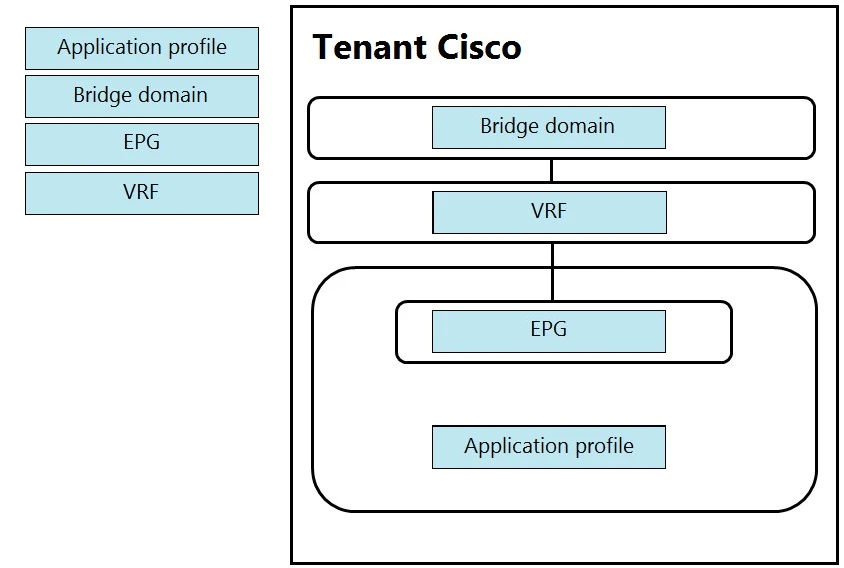To deploy an access port policy group, a leaf interface profile needs to be created. This is because the leaf interface profile specifies which interfaces the access policies are applied to, ensuring that the configuration can be deployed to the appropriate interfaces in the network fabric. Therefore, the correct answer is leaf interface.
To prevent a fault from appearing on the APIC, the administrator should use the option to Ignore Fault by right-clicking on the fault under System -> Faults and selecting Ignore Fault. This action creates a fault severity assignment policy that hides the fault, ensuring it does not appear in fault reports or status dashboards.
A RADIUS user resolves its role via the Cisco AV Pair, which specifies the APIC required RBAC roles and privileges for the user. These roles and privileges define access at the managed object class level. The managed object class details the specific functions and resources a user can interact with, based on their assigned roles and privileges.
An engineer is configuring a VRF for a tenant named Cisco. Drag and drop the child objects on the left onto the correct containers on the right for this configuration.
Select and Place:


The feature that dynamically assigns or modifies the EPG association of virtual machines based on their attributes is called uSeg EPGs (microsegmented EPGs). These enable fine-grained segmentation and policies by using VM attributes such as name, tags, or other metadata to determine the appropriate EPG assignment.